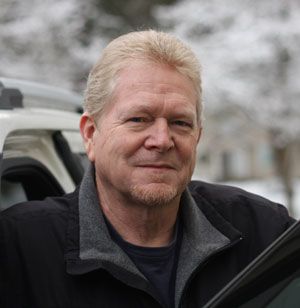Try parking with precision
This column regularly reminds drivers of the many ways to drive with precision. Parking with precision should be a part of that formula.
At the end of every drive you must park your vehicle. When arriving at home, this normally involves a convenient and inconsequential stop in your driveway, garage, or along the curb. While it’s possible to smack a vehicle in your own driveway, or crash through the back of your garage, you make your own rules at home and mishaps merely inconvenience you or a family member. Even when you confuse other drivers by parking illegally facing opposing traffic aside your curb you are not likely to be admonished.
But those at-home parking behaviors do not measure up to the potential inconvenience and aggravation you can cause when you’re parking out in public. Poor parking etiquette comes in many forms, and when time and space demands are at a premium, it’s especially unwelcome.
Why are there always so many drivers who can’t keep their vehicles within the designated parking lines? Everything short of a dump truck or combine should fit just fine in a single spot, but I often miss out on parking spots as a result of drivers who feel the need to take two. I’ve always felt that the meaning of those lines was quite clear, although maybe not. I remember when one of the downtown parking garages had a drawing on the back of its tickets showing the right (a vehicle within the lines) versus the wrong (vehicle angled and straddling the line) ways to park. Do people really need a diagrammed explanation to understand this? Evidently, yes.
And there are those drivers among us who persist with parking in “disabled” spots with no authorization to do so — unless you call borrowing your grandmother’s car with the special plate “authorization”. Simply sporting the proper plate for one of these restricted spaces doesn’t give every driver of that vehicle the right to park there — the permit is for a specific individual who may have difficulty covering a long distance to the store. Possession of the plate doesn’t give one any more right to use a disabled-designated space than a driver with a normal plate — to be in compliance, the physically challenged person must be in the car. Unfortunately, those with and without the correct plate regularly use these zones illegally. Hefty fines are a potential result, but inconveniencing those who really need the close-in parking is a certain result.
I realize that some drivers haven’t parallel parked since their driving test, and even failed that segment of the exam back then. But in the middle of downtown, amid dense traffic, is no time to practice the craft. If you think you need practice, do like the B&B Driving School and retreat to a quiet residential street to perfect the maneuver — it will reduce stress on you and others during the potentially tense holiday season. Or, save up for a vehicle with parallel parking assist.
Finally, please don’t dilly-dally when you are ready to leave your parking spot either, especially when available spots are in short supply. Long cell phone conversations, changing attire, make-up application, or three-course meals can probably wait when someone is waiting for your spot. If you are not leaving, let the person waiting know that, but if you are leaving — get going!
Readers may contact Bill Love via e-mail at precisiondriving@spokesman.com.
